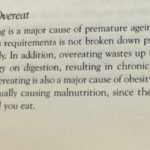
Buya from Africa by Sophie Borland
For those who are originating from East Africa, this ?fruit? called BUYU or BUYA reminds us of our childhood days!!
Fruit with six times the vitamin C of an orange heading for UK supermarkets
By Sophie Borland
Last updated at 11:58 AM on 15th July 2008
It is one of the strangest fruits under the sun and has been revered in Africa for thousands of years. Now the bounty from the baobab tree is heading to our supermarkets after the EU agreed to allow it to be imported for the first time. The fruit, which from the outside looks like a coconut, contains six times more vitamin C than oranges and twice as mu ch calcium as milk.
The fruit is contained inside a hard nut
The tart pulp inside the velvety but hard shell of the baobab pod encases small round seeds. In its native Africa, it has provided health benefits for generations. The pulp, which is white, powdery and has a cheese-like texture, is extremely nutritious and high in anti-oxidants, iron and potassium.
The baobab (or upside-down tree, as it is also known) is cherished by locals who believe that its spirit protects villages. Only specially trained climbers are allowed to scale the branches to retrieve the fruit. Once the hard outer shel l has been broken the flesh can be eaten straight away, although it has a slightly sour flavour.
In some parts of East Africa the fruit is covered in a red, sugary coating and sold as sweets. Because the shell is so hard to crack, it will not be available to buy as a whole fruit in Britain. Instead, it will provide ingredients for smoothies and cereal bars. The fruit was finally allowed to be imported into the UK following extensive lobbying by Phytotrade.
Under current legislation, foods which have not been commonly consumed in the EU before 1997 have to be formally approved before they can go on sale or used in European food and drink products. The organisation submitted an application for the fruit to be imported in 2006 and the EU yesterday announced its approval.
THE BAOBAB, IN A NUTSHELL
– The baobab is known as the upside-down tree because of it’s root-like branches.
– According to African folklore, the original baobab bragged about its beauty so was turned upside down by the gods as a punishment.
– The tree’s flowers are said to be haunted by spirits which can protect against crocodiles.
– Its trunk can grow up to 50ft in circumference and 98ft high.
– Many baobabs are hollow and have been used as shops, barns, bus shelters and even prisons.
– The baobab is 80 per cent water and can store more than 26,000 gallons for periods of drought.
– Most live for 500 years although some survive for up to 2,000 years.
It is hoped that the dem and will enable millions of poor families in Africa to earn a living growing and harvesting the fruit. Gus Le Breton, chief executive of PhytoTrade Africa, said: ‘The EU decision is a crucial step to developing the global market which could be worth up to ?500 million a year.
‘Baobab is an ideal ingredient for smoothies and cereal bars, and its well documented nutritional benefits provide manufacturers with a new opportunity to target the booming market in healthy foods. ‘Dozens of companies have shown interest in baobab since we submitted the application and many have already conducted initial research. Now that approval has been given, they can progress to full-scale product development.’



